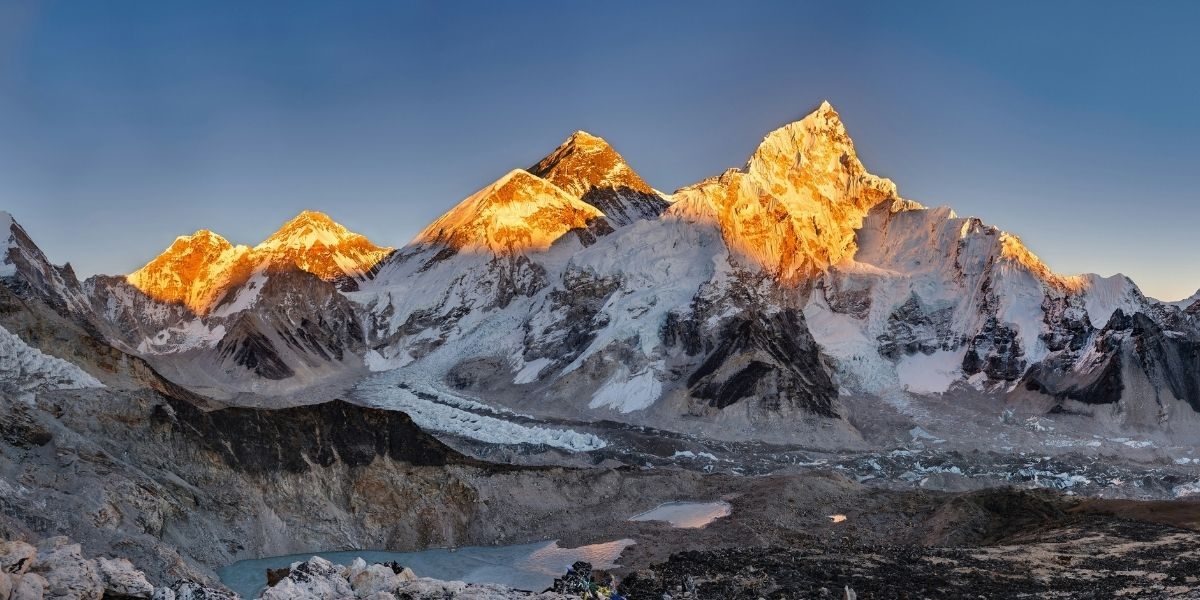What Makes Mount Everest’s Weather Phenomena So Extreme?
Mount Everest, the world’s highest peak, is famous not only for its towering height but also for its unrelenting and extreme weather conditions. The mountain’s weather is among the most severe on Earth, characterized by drastic temperature fluctuations, violent storms, and powerful winds that can challenge even the most experienced climbers. Understanding these phenomena is crucial for survival in one of the planet’s harshest environments.
Everest’s altitude creates a fragile and unpredictable atmosphere. Temperatures can plunge below -40 degrees Fahrenheit (-40 degrees Celsius), and storms can develop suddenly, bringing whiteouts and near-hurricane-force winds. The combination of altitude, cold, and wind chill can lead to severe frostbite, hypothermia, and other life-threatening conditions.
These weather extremes also impact the mountain’s terrain, triggering avalanches and icefalls, which add to the hazards climbers face. Studying Everest’s weather helps climbers prepare, adapt, and make critical decisions for safety.
Read Also: Exploring U.S. Landforms: From Mountains to Rivers
How Do Weather Patterns Develop on Mount Everest?
The weather on Everest is influenced by several factors, including its geographic location in the Himalayas and the global climate system. The mountain sits at the convergence of air masses from the Indian Ocean and the Tibetan Plateau, leading to complex weather patterns.
Monsoon season, typically from June to September, brings heavy snowfall and rain, increasing avalanche risk. The pre-monsoon and post-monsoon periods are generally considered the safest windows for climbing, offering relatively stable weather and clearer skies.
High-altitude winds, known as the jet stream, often descend over Everest, creating extremely strong gusts that can exceed 100 miles per hour. These winds can strip oxygen from the air, complicating breathing and increasing the risk of altitude sickness.
Temperature inversions and rapid atmospheric pressure changes add to the volatility. Weather forecasts for Everest are challenging due to the mountain’s elevation and terrain complexity, requiring climbers to rely on real-time observations and satellite data.
What Risks Do Extreme Weather Conditions Pose to Climbers?
The dangers posed by Everest’s weather are multifaceted. Sudden storms can trap climbers in exposed locations, leading to exhaustion, frostbite, and even death. Whiteout conditions reduce visibility, increasing the risk of falls and navigation errors.
Extreme cold damages equipment and compromises physical performance. Climbers must protect themselves with specialized gear designed to withstand frigid temperatures and high winds.
Avalanches triggered by heavy snow and shifting ice present a constant threat. The notorious Khumbu Icefall is particularly dangerous, as shifting ice seracs can collapse without warning.
Low oxygen levels combined with weather stress can exacerbate altitude sickness symptoms, such as headaches, nausea, and confusion, impairing judgment at critical moments.
Many accidents on Everest result from a combination of these weather-related hazards, emphasizing the need for thorough preparation and cautious decision-making.
How Have Climbers Adapted to Everest’s Weather Extremes?
Survival on Everest requires more than physical strength; it demands adaptation and respect for the mountain’s conditions. Over decades, climbers and expedition teams have developed strategies to mitigate weather risks.
Modern gear includes high-tech insulated clothing, oxygen systems, and weather-resistant tents. Advanced forecasting technology and satellite communication allow for better planning and rapid response to changing conditions.
Climbers often establish multiple camps at different altitudes to acclimatize gradually, reducing the risk of altitude sickness exacerbated by cold stress.
Experienced guides and Sherpas play critical roles in monitoring weather, advising on timing, and leading teams safely. Their knowledge of local conditions is invaluable in avoiding dangerous weather windows.
Furthermore, mountaineering organizations advocate for strict turnaround times and emphasize that no summit is worth risking life over deteriorating weather.
What Is the Future of Weather Research on Mount Everest?
Scientific research continues to improve understanding of Everest’s weather extremes. Meteorological stations on the mountain provide valuable data on temperature, wind speeds, and atmospheric pressure.
Climate change poses new challenges, potentially altering snowfall patterns, glacier stability, and storm frequency. Researchers study these trends to anticipate future risks and inform climbing guidelines.
Technological advancements, such as drones and remote sensors, enhance data collection in previously inaccessible areas. This information helps forecast storms more accurately and provides real-time updates to climbers and rescue teams.
Ongoing research also explores the physiological effects of extreme weather on the human body, guiding improvements in gear and medical protocols.
Reas Also: Discovering the Highest Peaks in the World
How Does Everest’s Weather Impact Local Communities and Ecology?
The mountain’s harsh weather affects not only climbers but also the indigenous Sherpa communities who live in its shadow. These communities have adapted culturally and economically to the environment, relying on tourism and mountaineering-related industries.
Extreme weather events can disrupt transportation and communication, affecting supplies and emergency response. The safety of Sherpa guides and workers is closely tied to understanding and respecting weather conditions.
Ecologically, Everest’s weather influences glacier dynamics and local biodiversity. Changes in temperature and precipitation impact water sources and habitat stability in the fragile Himalayan ecosystem.
Protecting this environment requires balancing human activity with conservation efforts, ensuring that weather extremes do not exacerbate ecological damage.








